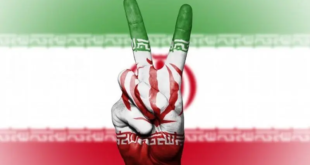 TEHRAN (FNA)- The ancient Iranian calendar was a solar calendar. The fact is repeatedly documented in the ancient Avesta writings. One of the most important solar festivals is called Nou Rouz – the New Year. Nou Rouz literally means the ‘New Day’ and is celebrated on the vernal equinox in spring.
TEHRAN (FNA)- The ancient Iranian calendar was a solar calendar. The fact is repeatedly documented in the ancient Avesta writings. One of the most important solar festivals is called Nou Rouz – the New Year. Nou Rouz literally means the ‘New Day’ and is celebrated on the vernal equinox in spring.
It is the time of rejuvenation in nature, the beginning of a new life and what better time can there be to start the New Year than with nature itself.
Nou Rouz is celebrated by the people of the lands that once formed the Persian Empire, irrespective of their present day political borders or religious beliefs. Nou Rouz according to the Persian mythology is believed to date back to about ten thousand BCE, when Shah Jamshid the Pisdadian king celebrated the first spring after the end of the last ice age.
The ancient Zoroastrian calendar consists of twelve equal months of 30 days each and between the last day of the twelfth month and the vernal equinox there are five free days or six in the case of a leap year. The leap year is automatically determined by the equinox and not by any belief or human agreement. Every year the equinox happens about 5 hours 48 minutes 20 seconds (.24190day) latter whereby automatically by the 4th year it happens 23:13:20 hour latter making that year a 366 day year.
Nou Rouz is one of the only scientifically precise New Year celebrated in the world. The calculation and coining of the word “Nou Rouz” (New Day) as against “Sal e Nou” (New Year) was the work of Zarathustra the sage of ancient Iran, who was also the first to envisage the concept of Meridian.
Zarathustra calculated the first meridian and called it “Nim Rouz”, which means “Mid Day”.
The Meridian of Zarathustra was located in ancient Sistan at 62 degrees longitude. Even today that location in Afghanistan is called the Nimrouz Province. When it is mid day at the Meridian of Zarathustra (62 degrees longitude) there is sunshine from Japan the land of the rising sun to the western tip of Africa. What better location can there be for an intellectual and scientific meridian. Similarly the unequal relation between the revolution and rotation of the earth led Zarathustra to calculate and derive the concept of Nou Rouz the New Day.
Nou Rouz is when the sunrise coincides with the vernal equinox at a predetermined longitude. This event happens every year at a different longitude and has repeated itself at the same location once in about 1230 – 1240 years. The fact is that the earth goes round the sun in 365.24190 tropical days, thereby every four years we have an extra 0.9676 day (0.24190 X 4), so we can add a day in the fourth year, although by that we are starting the fifth year short by 0.0324 day (1 – .9676) which means 46 minutes and 39.36 seconds short.
To cover the short fall every 120 years we skip a leap year but even that results in a fraction 120 X 365 +116\4 = 43829 days accounted for by our system of recording leap years. While in fact the earth has taken 365.24190 X 120 = 43829.028 days. Thus the 120th year again starts short by 40 minutes and 32 seconds (1440x.028). Apart from these there are other factors that affect the time on earth, like the gravitational pull of various planets when they come close to the earth once in a few years, or a comets passing close to the earth, even a strong earthquake has an effect on the time on earth. Since the advent of the atomic clock these factors have been recognized by the scientific world. Zarathustra was a sage whose wisdom was far ahead of his time, for he understood the ultimate truth in nature. Zarathustra always looked for solutions in nature. He realized that every year the equinox coincides with the sunrise at a different longitude and whatever fractional difference that remains in the calendar even after regular corrections can be zeroed out when the sunrise coincide once again at the same longitude. His calculation showed him that in the year 1725 BCE the vernal equinox would coincide with the sunrise at Sistan and so he named the New Year of that year as Nou Rouz the New Day.
As recorded in history on the spring equinox of 487 BCE Nou Rouz was celebrated at Takth-e-Jamshid (Persepolis), when the first rays of the rising sun lighted the square stone set in the central hall of the Apadana palace.
Today Nou Rouz has become synonymous with Sal e Nou (New Year). Nou Rouz has also been adopted as a religious new year by those modern Semitic religions that were started by Iranians in Iran.
Nou Rouz as a new year shall one day be adopted by the intellectual world when their attention is drawn to the truth behind it.
With special thanks to Fariborz Rahnamoon
 Eurasia Press & News
Eurasia Press & News



